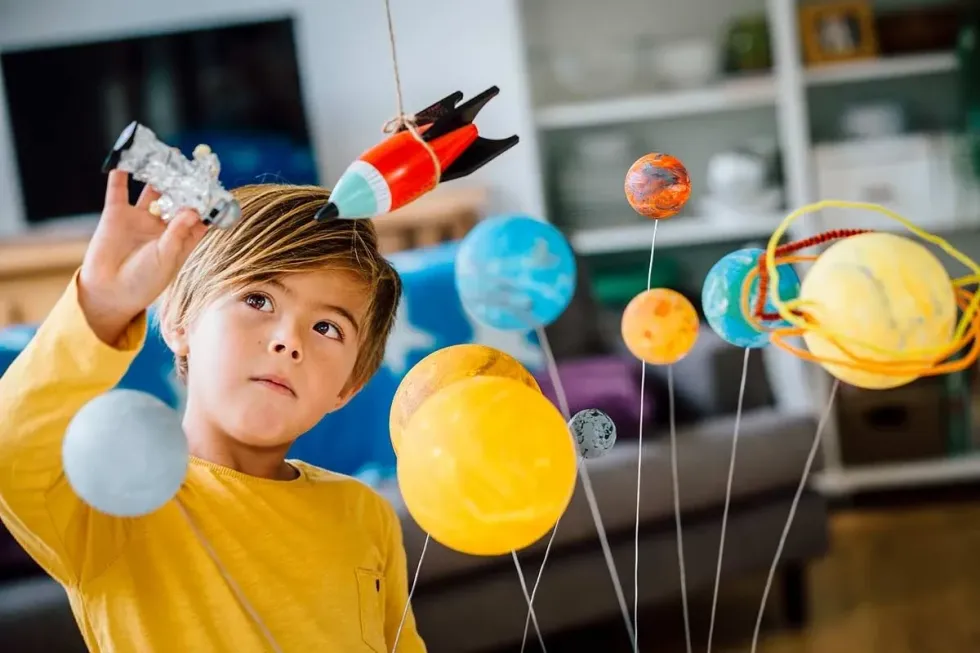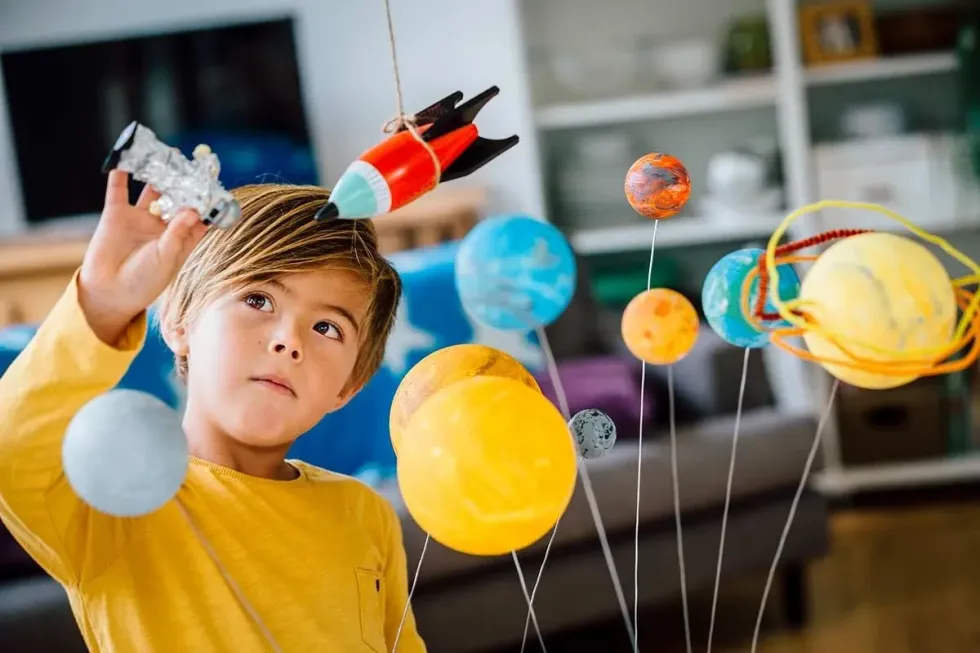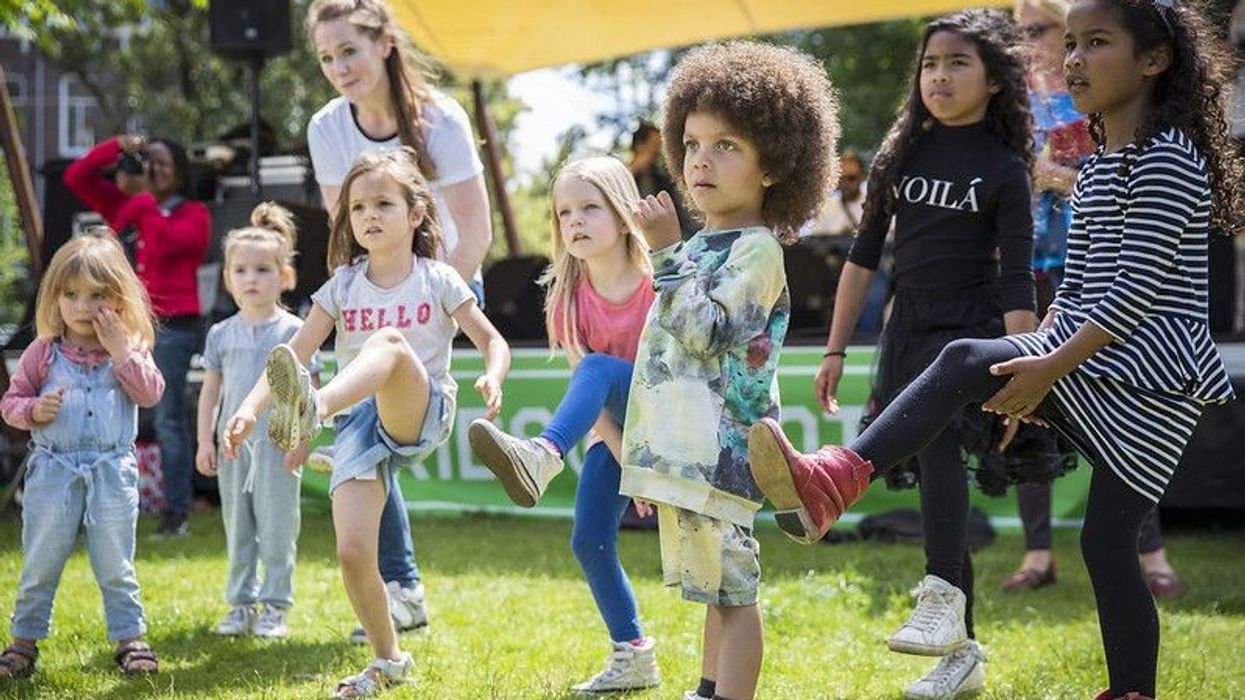Those of us new to home-schooling might find the idea of taking on the role of science teacher to our kids a little intimidating at first. But there are plenty of exciting KS1 and 2 science experiments you can do at home!
We've compiled a list of fun, free activities based on the primary curriculum to help teach your children the fundamentals of science. Put on your white coat, we're going back to the lab!
Learn about germs

This fun, sparkly activity will help your children visualise how germs spread and the importance of hand-washing.
What you'll need:
Glitter (different colours if possible)
Hand/ body cream
Wet wipes
Water
Soap
Method
First, everyone rubs cream into their hands and sprinkles a thin layer of glitter on top. If you have different colours, you can each use a different colour. Next, shake hands with each other.
Point out how glitter has transferred from one person's hands to the other's. If there are a few of you, count how many colours of glitter you now have on your hands. Now, wash your hands.
Between you, try different methods for cleaning the glitter off. Experiment with wet wipes, just water, and water and soap. Who has the cleanest hands by the end?
You can also continue this activity using washable paint. Get a little on your hands and go round touching different items such as doorknobs and counters. This should help your children get an idea of how germs can be transferred to surfaces and how to prevent themselves and their loved ones picking up bugs.
Make a self-inflating balloon

We are now going to see a balloon inflate itself without anyone having to blow it up! Yes, it's time for a little scientific investigation into chemical reactions. Here we'll use a base (baking powder) and an acid (vinegar).
What happens when a base mixes with an acid? It produces CO2, the same gas we breathe out. In this experiment, the gas produced by the reaction can't escape and fills the balloon.
What you'll need:
Balloons
A small plastic bottle
Baking powder/bicarbonate of soda
Water
Vinegar
Funnel
Method
First pour a small amount of water into the bottle, and add the same amount of vinegar. Use a funnel to fill the balloon with a teaspoon of baking powder.
Fit the balloon over the bottle neck, taking care not to let any powder fall into the bottle. Then lift the end of the balloon and let the powder fall in. Stand the bottle on a table and watch the balloon miraculously inflate itself!
Learn how to make a lava lamp

Science goes groovy! You can use just a few household items to imitate your old lava lamp from back in the Noughties. This fun activity teaches children about density, and provides another opportunity to see C02 in action.
What you will need:
Plastic bottle
Vegetable oil
Funnel
Alka-Seltzer tablet
Food colouring (not yellow as it won't show up)
Water
Method
Fill one third of the bottle with water and add a few drops of colouring. Fill the rest of the bottle with vegetable oil, break the Alka-Seltzer in half, and drop it in.
As water is denser than oil, it will sink to the bottom of the bottle. The food colouring will only mix with the water so the oil will stay the same colour.
The tablet will fall through the oil and react with the water, creating C02 bubbles. Being much less dense than both water and oil, the gas will rise to the surface, carrying drops of coloured water with it. When the bubbles pop the water will float back down to the bottom.
Make your own water filter

This science investigation from the year 2 science curriculum teaches us how to separate a solid from a liquid, and what materials are better at filtering than others.
What you will need:
Water
Sand/gravel
Colander
Paper towel
Cloth
Sieve
Funnel
Paper cupcake cases
Two bowls
Method
First mix a bowl of water with some gravel or sand. Then use each item in turn to see how well it filters the solids out of the water. Can you get a bowl of clear water at the end?
See how different chocolate melts

The experiment they've all been waiting for - chocolate tasting! In this investigation, children test different types of chocolate against each other to see how fast they each melt.
You can use a variety of different types of chocolate, ones with wrappers and others without, dark, milk and white chocolates, with fillings and without, and a range of sizes and textures.
What you will need
A variety of small chocolate sweets (Maltesers, Roses, Smarties etc.)
Method
Children can first separate all the sweets into categories, for example by colour, shape or whether or not they have a filling. They can then test which type of chocolate melts the fastest.
This can be by putting it on a plate out in the sun, holding it for 60 seconds in their hand or putting it in their mouth!
If they can resist accidentally eating them all first they will learn that chocolates with a higher fat content melt quicker than those with a higher percentage of cocoa.
For this reason, white chocolate melts faster than dark chocolate. They will also see that a Smartie takes longer to melt than a sweet without a hard coating, and discover whether things like shape or texture affect melting speed.
Easy DIY Slime

Our favourite kind of slime - all natural, non-toxic and easy to clean up. When it dries to a powder you can simply hoover it up. This science investigation shows children that there are some substances that can act like both a liquid and a solid.
What you will need:
Cornflour
Water
Glass dish/tray
Food colouring (optional)
Method
Put four tbsp cornflour in the dish and slowly add water, a little at a time, until you have a thick liquid.
We added a drop or two of blue food colouring, and it was fun to watch the colour marble the mixture and then create a vivid electric blue slime! When you touch the substance firmly with your finger it should be hard to the touch, but if you touch it gently your finger should sink into liquid.
This is because you have now created a nonNewtonian fluid, which is the name we give to liquids whose viscosity can change depending on the force exerted on it.
Dye some flowers

This is one of our favourite investigations, and it's a fun way to teach primary children about transpiration.
What you will need:
White flowers (daisies are fine!)
Gel food colouring (not natural food-colouring)
Water
Glass
Method
Put a few drops of food colouring in a glass of water. Trim a little bit off the bottom of the stalks and place the flowers in the glass.
After a few hours you should see the flowers change colour! If you have a large flower you can split the stalk in half and put one half in one glass of coloured water and the other half in another colour.
When water evaporates from the flower, water is sucked up through the stem to the head to replace the water lost. This is called transpiration.














